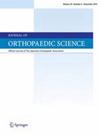手术部位感染是否影响患者报告的脊柱手术后的结果?一项多中心队列研究。
IF 1.5
4区 医学
Q3 ORTHOPEDICS
引用次数: 0
摘要
背景:手术部位感染在脊柱手术中很常见。目前尚不确定脊柱手术患者在手术部位感染与不感染的情况下的结果是否相等。因此,我们评估了手术部位感染对术后患者报告结果的影响。方法:我们招募了2017年4月至2020年2月期间在12家医院接受选择性脊柱手术的患者。我们收集了有关患者背景、手术因素和手术部位感染发生率的数据。术前和术后1年获得患者报告结果的数据,即数字评定量表、颈部残疾指数/Osvestry残疾指数、EuroQol五维度问卷和12项简式健康调查得分。我们将患者分为有和无手术部位感染组。进行多变量逻辑回归分析,以确定手术部位感染的危险因素。使用倾向评分匹配,我们获得了匹配的手术部位感染阴性和阳性组。Student t检验用于比较连续变量,Pearson卡方检验用于比较两个匹配组和两个不匹配组之间的分类变量。结果:本研究共纳入8861例患者;74例(0.8%)发生手术部位感染。颈椎手术和美国麻醉师学会身体状况分类≥3被确定为危险因素;显微镜检查被认为是一个保护因素。使用倾向评分匹配,我们比较了手术部位感染阳性组和阴性组(每组74例)。两组在下背部、臀部、腿部和足底区域的术后疼痛或感觉障碍方面没有显著差异。当比较术前和术后疼痛和感觉障碍时,两组的这两个变量都有统计学上的显著改善(p结论:有手术部位感染的患者与没有手术部位感染患者的术后结果相当。本文章由计算机程序翻译,如有差异,请以英文原文为准。
Does surgical site infection affect patient-reported outcomes after spinal surgery? A multicenter cohort study
Background
Surgical site infections are common in spinal surgeries. It is uncertain whether outcomes in spine surgery patients with vs. without surgical site infection are equivalent. Therefore, we assessed the effects of surgical site infection on postoperative patient-reported outcomes.
Methods
We enrolled patients who underwent elective spine surgery at 12 hospitals between April 2017 and February 2020. We collected data regarding the patients' backgrounds, operative factors, and incidence of surgical site infection. Data for patient-reported outcomes, namely numerical rating scale, Neck Disability Index/Oswestry Disability Index, EuroQol Five-Dimensional questionnaire, and 12-Item Short-Form Health Survey scores, were obtained preoperatively and 1 year postoperatively. We divided the patients into with and without surgical site infection groups. Multivariate logistic regression analyses were performed to identify the risk factors for surgical site infection. Using propensity score matching, we obtained matched surgical site infection-negative and -positive groups. Student's t-test was used for comparisons of continuous variables, and Pearson's chi-square test was used to compare categorical variables between the two matched groups and two unmatched groups.
Results
We enrolled 8861 patients in this study; 74 (0.8 %) developed surgical site infections. Cervical spine surgery and American Society of Anesthesiologists physical status classification ≥3 were identified as risk factors; microendoscopy was identified as a protective factor. Using propensity score matching, we compared surgical site infection-positive and -negative groups (74 in each group). No significant difference was found in postoperative pain or dysesthesia of the lower back, buttock, leg, and plantar area between the groups. When comparing preoperative with postoperative pain and dysesthesia, statistically significant improvement was observed for both variables in both groups (p < 0.01 for all variables). No significant differences were observed in postoperative outcomes between the matched surgical site infection-positive and -negative groups.
Conclusions
Patients with surgical site infections had comparable postoperative outcomes to those without surgical site infections.
求助全文
通过发布文献求助,成功后即可免费获取论文全文。
去求助
来源期刊

Journal of Orthopaedic Science
医学-整形外科
CiteScore
3.00
自引率
0.00%
发文量
290
审稿时长
90 days
期刊介绍:
The Journal of Orthopaedic Science is the official peer-reviewed journal of the Japanese Orthopaedic Association. The journal publishes the latest researches and topical debates in all fields of clinical and experimental orthopaedics, including musculoskeletal medicine, sports medicine, locomotive syndrome, trauma, paediatrics, oncology and biomaterials, as well as basic researches.
 求助内容:
求助内容: 应助结果提醒方式:
应助结果提醒方式:


